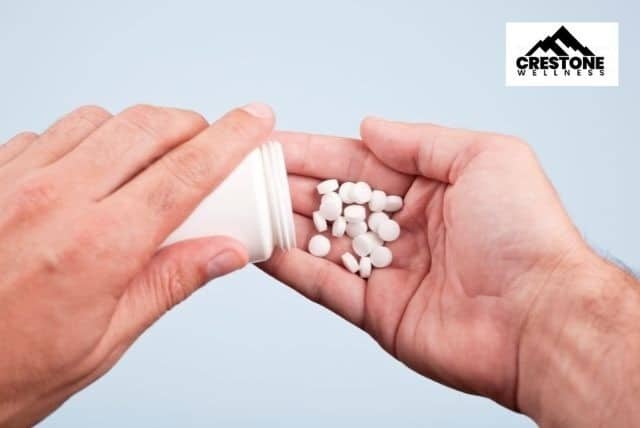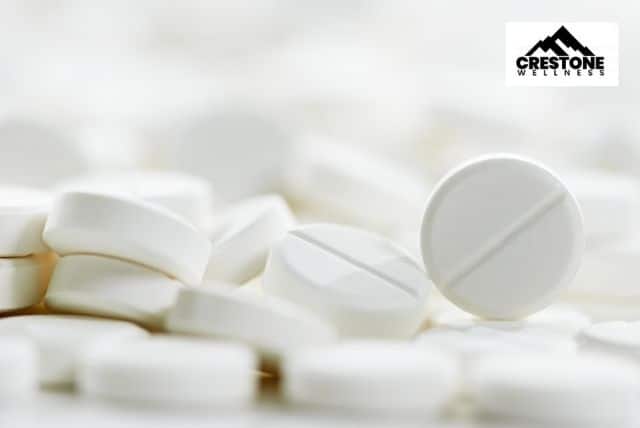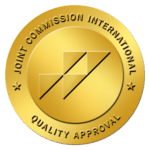Tramadol is a special opioid prescribed for those who suffer from moderately severe pain because of chronic conditions, such as injuries, surgery, and osteoarthritis. It’s listed as a Schedule IV drug through the Drug Enforcement Administration (US). Overall, this indicates that it has a lower risk of dependence and abuse potential.
To compare, morphine sits on the Schedule II list, so it indicates an exceptionally high abuse potential and could lead to psychological/physical dependence.
When a person abuses the drug, addiction and physical dependence might occur. Tramadol works by calming the central nervous system. While it might not cause dependency, there could be an increased risk if you’re using it often to relieve moderate to severe pain. It’s wise to speak to a medical professional about opioid dependence if you feel that might be the case.
Let’s learn more about Tramadol withdrawal and what you might expect if you’re going through it now.
Opioid Withdrawal Symptoms (Tramadol Withdrawal)

Tramadol might cause unpleasant withdrawal symptoms, though they aren’t often deadly. However, it could be difficult to go through Tramadol withdrawal yourself. Some people experience serious complications without proper medical treatment.

The withdrawal symptoms can be felt after psychological or chemical dependency on the drug. Opioids are well-known for assisting with pain relief and causing central nervous system depression.
Using Tramadol extensively can make your brain rely on this drug’s effects to help your body balance brain chemistry. Instead of using its own chemicals and endorphins to relieve pain, it requires the medication.
If you stop taking Tramadol or any opioid suddenly, your brain chemistry becomes unbalanced. The opioids bind to those receptors in the brain and body, such as the intestines, muscles, and bones. Therefore, withdrawal symptoms are generally felt all over the body.

The symptoms for opioid withdrawal often feel like you have the flu. However, they’re usually more intense. When a person vomits constantly, has diarrhea, and sweats profusely, withdrawal leads to dehydration, which is fatal if left untreated.
There are two forms of Tramadol withdrawal: atypical opioid withdrawal syndrome and traditional opioid withdrawal syndrome.
Typically, the medical professional should taper you off the drug while monitoring your physical/psychological symptoms. However, if they don’t do this correctly or you withdraw yourself, you might experience symptoms lasting longer than one week. This is called post-acute withdrawal symptoms and could include irritability, insomnia, mood swings, depression, or anxiety.
Effective Ways to Manage Opioid Withdrawal

Primarily, the best way to manage an opioid addiction is by seeking a medical detox in a hospital or through an addiction center. You receive 24-hour care, and the process takes anywhere from five to 10 days to complete. This depends on how heavily you use the drug.
Tramadol Withdrawal Symptoms
You could experience these symptoms during Tramadol withdrawal:

- Hallucinations
- Delirium
- Psychosis
- Panic attacks
- Confusion
- Paranoia or panic
- Increased heart rate or blood pressure
- Fast breathing
- Muscle or joint aches and pains
- Restless leg syndrome
- Trouble staying or falling asleep
- Agitation
- Runny nose, coughing, and sneezing
- Abdominal cramps
- Goosebumps
- Vomiting or nausea
- Loss of appetite
- Anxiety
- Respiratory depression
- Irritability
- Diarrhea
- Chills
- Body aches
- Sweating
- Drug cravings
The Tramadol Withdrawal Timeline

The symptoms and withdrawal timeline of when they might happen vary between people. There are many factors that determine how long the withdrawal lasts, when you start feeling the symptoms, and how intense they become. These include:
- Whether you quit cold turkey or tapered off gradually
- The size of the last dose of the medication
- Whether you took it with other drugs
- The form of the drug (intravenous injection, powder, or pill)
- The size of your usual dose
- How long you’ve been using the drug
Generally, Tramadol withdrawal symptoms begin about two to three days after you’ve taken your last dose, and you’re usually over them within one week.
However, most of the symptoms of tramadol withdrawal are less intense than when using other opioids, such as oxycodone and heroin. Overall, Tramadol’s effects are comparatively mild when activating opioid receptors, so it’s easier for the brain to adjust when it goes away.

Usually, Tramadol starts working in 60 minutes, and the effectiveness wears off after about three hours. The effects of this drug might last four or six hours before fading. Sometime after that six-hour mark, the flu-like symptoms appear, such as a runny nose. They begin mildly and could increase in intensity gradually, depending on how much you took.
Your Tramadol withdrawal symptoms and timeline also depend on your current drug use, metabolism, physicality, and many other factors. It could look like this:
The First 24 Hours
During this time, you might start feeling symptoms about six to 12 hours after your last dosage when using short-acting opioids, such as Tramadol.
Days One and Two
Symptoms often start for any long-acting opioids, such as oxycodone.
Day Three
Withdrawal symptoms often peak.
Days Four to 10
Withdrawal symptoms begin to dissipate.
How to Treat Tramadol Withdrawal Symptoms
In most cases, withdrawal isn’t fatal when on Tramadol. However, the symptoms are generally uncomfortable. If you have other substance use disorders, co-occurring problems, or become dehydrated, withdrawal could be dangerous or life-threatening. Therefore, it’s best to choose a medical detox.
A medical detox offers 24-hour care from appropriate medical professionals who can monitor you. They are located in accredited treatment centers. Those going through the detox are watched around the clock to ensure that they don’t have any negative effects while coming down.
After the Tramadol detox, a medical professional works with you to develop the appropriate level of care. If you’re diagnosed with a severe opioid use disorder, you may need more treatment to address the addiction. Likewise, your physical and mental health should be considered so that you can focus on sobriety for the long term.
Where to Turn for Help

Overall, addiction is a brain disease that’s chronic and might be difficult to overcome on your own. Therefore, you need appropriate help and addiction treatment options to achieve sobriety and sustain it.
The withdrawal process is often intimidating because of the many uncomfortable symptoms you will face. Therefore, a Tramadol detox might be the best choice. It will minimize the negative effects and discomfort and help you focus on recovery.
Those who complete their detox might need to continue into an inpatient/outpatient treatment program. This will help you learn about tools to avoid relapse and battle your drug addiction.

Research indicates that you will need at least three months (and sometimes longer) to treat Tramadol addiction effectively. It’s wise to stay in treatment as long as you can because you will learn life skills that provide you a chance at recovery now and sobriety for the future.
There are many approaches available for Tramadol abuse, and you aren’t alone in your struggle. Often, learning that others suffer like you makes it easier to deal with the root problem in your life and get back on track!
Are you ready to be free from drug abuse? You require the appropriate substance abuse treatment plan, and Crestone Detox Austin – Alcohol & Drug Rehab is here to assist. We can help you start your journey to sobriety and continue on that path. Contact us now for assistance!







